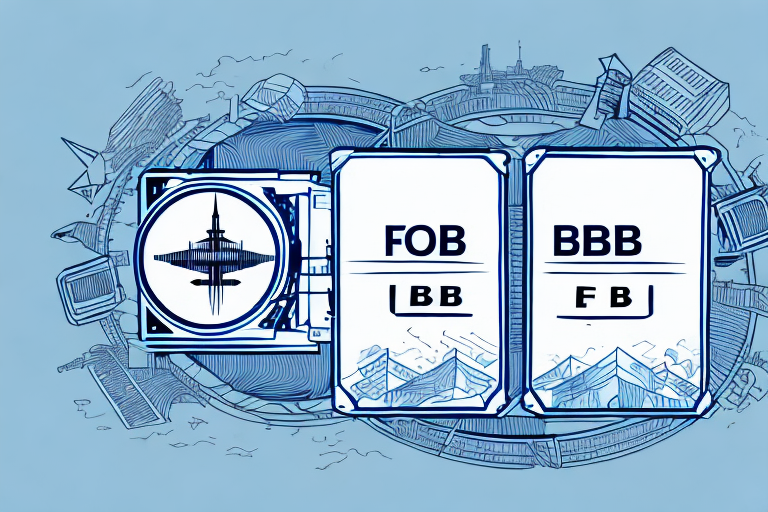Understanding Wholesale Shipping Costs
Sourcing products from wholesale suppliers is a strategic approach for businesses aiming to secure inventory at lower costs, thereby enhancing profitability. A critical aspect to consider in this process is who bears the cost of shipping, as it directly impacts your overall expenses and pricing strategy.
The Basics of Wholesale Shipping Costs
Wholesale shipping costs encompass the fees associated with transporting products from the supplier’s location to the buyer’s destination. These costs are influenced by several factors, including:
- Distance: Longer distances typically result in higher shipping fees.
- Weight and Volume: Heavier and bulkier shipments incur higher costs.
- Shipping Method: Different transportation modes (air, sea, ground) have varying costs and delivery times.
For instance, according to the Bureau of Transportation Statistics, ground shipping remains the most cost-effective method for domestic shipments, while air shipping, though faster, is significantly more expensive.
The Impact of Distance and Weight on Wholesale Shipping Rates
The distance between the supplier and the buyer is a primary determinant of shipping costs. Longer distances not only increase the transportation fees but also the time it takes for products to arrive. Additionally, the weight and volume of the shipment play crucial roles. Heavier and larger shipments demand more resources, leading to higher costs.
For example, shipping a 500-pound order across the country can cost up to three times more than a 100-pound shipment within the same region.
The Role of Packaging in Wholesale Shipping Costs
Proper packaging is essential not only for protecting products during transit but also for managing shipping costs effectively. The choice of packaging materials and methods can significantly influence the overall shipping fees.
- Material Selection: Lightweight packaging materials like air pillows or paper can reduce the shipment's weight and size, lowering costs.
- Packaging Efficiency: Efficient packing maximizes space utilization, allowing more products per shipment and reducing the number of trips required.
Moreover, sustainable packaging options are gaining popularity. Businesses adopting eco-friendly packaging can enhance their brand image while potentially qualifying for lower shipping rates due to lighter materials. According to a report by Packaging Strategies, 60% of consumers prefer brands that use sustainable packaging, making it a worthwhile investment.
Types of Wholesale Shipping Fees
Understanding the Different Types of Wholesale Shipping Fees
Wholesale suppliers typically offer various shipping options, each with distinct cost structures:
- Standard Shipping: Cost-effective with longer delivery times.
- Expedited Shipping: Faster delivery at a higher cost.
- Overnight Delivery: The quickest option, usually the most expensive.
Choosing the right shipping option depends on your business needs and customer expectations. For example, standard shipping is ideal for non-urgent orders, while expedited or overnight shipping is suitable for time-sensitive deliveries.
The Pros and Cons of Offering Free Shipping on Wholesale Orders
Free shipping can be a powerful marketing tool to attract and retain customers. However, it comes with its own set of advantages and disadvantages:
- Pros:
- Increased sales and higher conversion rates.
- Enhanced customer satisfaction and loyalty.
- Competitive advantage over businesses that charge for shipping.
- Cons:
- Potentially lower profit margins due to absorbed shipping costs.
- Risk of customers placing smaller orders to meet the free shipping threshold.
- Higher overall shipping expenses if not managed carefully.
To mitigate the drawbacks, businesses often set a minimum order threshold for free shipping. This encourages larger purchases, offsetting the cost of providing free shipping. For instance, offering free shipping on orders over $100 can increase the average order value while maintaining profitability.
Strategies for Managing Shipping Costs
Shipping Costs: A Major Factor in Determining Profitability
Shipping fees directly impact your profit margins. High shipping costs can erode profits, especially for low-margin products. It's essential to balance competitive shipping rates with maintaining healthy profit margins.
According to a study by Forbes, optimizing shipping strategies can lead to a 10-20% increase in profitability by reducing unnecessary costs and enhancing operational efficiency.
Tips for Negotiating Shipping Rates with Wholesale Suppliers
Negotiating favorable shipping rates is crucial for reducing overall costs. Here are some effective strategies:
- Research and Compare: Analyze shipping rates from multiple suppliers to identify the most cost-effective options.
- Leverage Volume Discounts: Larger orders often qualify for discounted shipping rates. Negotiate based on your purchasing volume.
- Partner with Third-Party Logistics (3PL) Providers: 3PLs can offer better shipping rates and more flexible options due to their established networks.
- Build Strong Supplier Relationships: Long-term partnerships can lead to better pricing and more favorable shipping terms.
For example, partnering with a 3PL provider like Freightos can provide access to discounted shipping rates and streamlined logistics management.
How to Calculate Shipping Costs for Wholesale Purchases
Accurate calculation of shipping costs involves considering multiple factors:
- Weight and Dimensions: The total weight and size of the shipment.
- Distance: The geographical distance between the supplier and the destination.
- Shipping Method: The chosen mode of transportation (air, sea, ground).
- Additional Fees: Costs such as fuel surcharges, insurance, and customs duties.
Most suppliers provide shipping calculators on their websites to help estimate these costs. Additionally, requesting detailed quotes from multiple carriers can provide a clearer picture of potential expenses.
Common Mistakes to Avoid When Estimating Wholesale Shipping Fees
Accurately estimating shipping fees is vital to prevent unexpected costs. Avoid these common mistakes:
- Ignoring Additional Surcharges: Fees like fuel surcharges or residential delivery fees can inflate costs.
- Overlooking Packaging Weight: The weight of packaging materials can significantly impact shipping fees.
- Neglecting Return Costs: Factor in the cost of managing returns and exchanges.
- Disregarding Distance: Failing to account for the full distance can lead to underestimating costs.
By meticulously considering all factors, businesses can ensure more accurate shipping cost estimates, enhancing financial planning and customer satisfaction.
Marketing and Shipping
Free Shipping: A Marketing Tool for Wholesale Businesses
Offering free shipping can be an effective marketing strategy to attract customers and boost sales. It not only makes your offerings more appealing but also simplifies the purchasing decision for customers.
However, it's essential to assess the financial viability of free shipping. Implementing a minimum order threshold can help balance the benefits with cost control. For example, setting a minimum purchase of $150 can encourage larger orders, offsetting the cost of free shipping.
Additionally, promoting free shipping during special campaigns or holidays can create a sense of urgency and drive quicker sales.
How to Pass on Shipping Costs to Your Customers Without Losing Sales
Passing on shipping costs to customers is a common practice, but it needs to be handled thoughtfully to avoid deterring potential buyers. Here are some strategies:
- Bundling Shipping Costs: Incorporate shipping fees into the product price, offering "free shipping" while maintaining transparency.
- Tiered Shipping Options: Provide multiple shipping options (e.g., standard, expedited) to cater to different customer budgets.
- Transparency: Clearly communicate shipping costs at checkout to build trust and avoid surprises.
- Incentivize Larger Orders: Offer discounts or free shipping on orders that exceed a certain amount.
For instance, Amazon successfully uses tiered shipping options and offers free shipping for Prime members, ensuring customers feel they receive value without being overwhelmed by hidden costs.
Technological and Sustainable Advancements in Shipping
How Technology is Revolutionizing the Wholesale Shipping Industry
Technological advancements are transforming the wholesale shipping landscape, making it more efficient and cost-effective:
- Online Shipping Calculators: Tools that provide real-time shipping rates and delivery estimates.
- Track and Trace Systems: Enhanced visibility into shipments, allowing for better management and customer communication.
- Automated Shipping Labels: Streamlining the shipping process and reducing errors.
- AI and Machine Learning: Optimizing routes and predicting potential delays.
Companies like FedEx and UPS are at the forefront of integrating these technologies to enhance service reliability and reduce costs.
Sustainable Packaging Options for Reducing Your Wholesale Shipping Footprint
As environmental concerns rise, sustainable packaging options are becoming increasingly important for businesses. Adopting eco-friendly packaging not only reduces your carbon footprint but also resonates with environmentally conscious customers.
- Biodegradable Materials: Packaging that breaks down naturally, reducing environmental impact.
- Recycled Materials: Utilizing recycled paper and plastics to minimize waste.
- Reusable Packaging: Designing packaging that can be reused by customers, enhancing product value.
According to EPA, sustainable packaging can significantly reduce waste and promote a circular economy. Businesses implementing these options can improve their brand image and attract a loyal customer base committed to sustainability.
Conclusion
Shipping costs are a pivotal consideration when purchasing wholesale products, directly impacting your business's profitability and customer satisfaction. By understanding the various factors influencing shipping fees, exploring different shipping options, and implementing strategic cost-management measures, businesses can optimize their shipping processes. Additionally, embracing technological advancements and sustainable packaging options can further enhance efficiency and appeal to environmentally conscious consumers.
Ultimately, a well-rounded shipping strategy that balances cost, efficiency, and sustainability will contribute to long-term success and profitability in the competitive wholesale market.




















